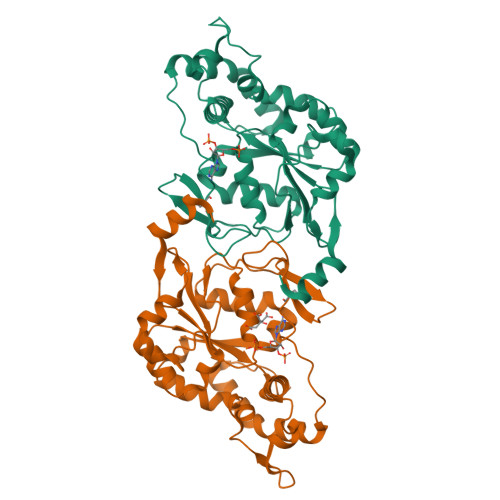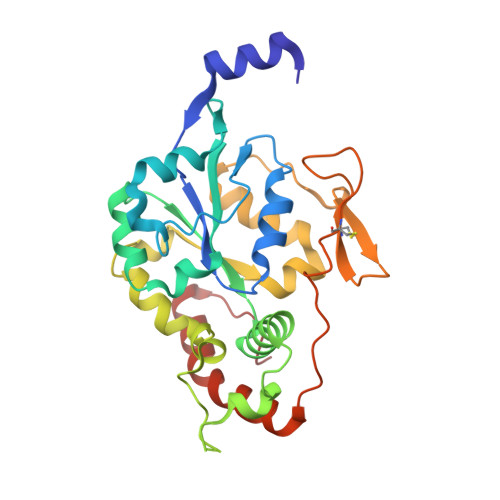Structural analysis of the sulfotransferase (3-o-sulfotransferase isoform 3) involved in the biosynthesis of an entry receptor for herpes simplex virus 1
Moon, A.F., Edavettal, S.C., Krahn, J.M., Munoz, E.M., Negishi, M., Linhardt, R.J., Liu, J., Pedersen, L.C.(2004) J Biological Chem 279: 45185-45193
- PubMed: 15304505
- DOI: https://doi.org/10.1074/jbc.M405013200
- Primary Citation of Related Structures:
1T8T, 1T8U - PubMed Abstract:
Heparan sulfate (HS) plays essential roles in assisting herpes simplex virus infection and other biological processes. The biosynthesis of HS includes numerous specialized sulfotransferases that generate a variety of sulfated saccharide sequences, conferring the selectivity of biological functions of HS. We report a structural study of human HS 3-O-sulfotransferase isoform 3 (3-OST-3), a key sulfotransferase that transfers a sulfuryl group to a specific glucosamine in HS generating an entry receptor for herpes simplex virus 1. We have obtained the crystal structure of 3-OST-3 at 1.95 A in a ternary complex with 3'-phosphoadenosine 5'-phosphate and a tetrasaccharide substrate. Mutational analyses were also performed on the residues involved in the binding of the substrate. Residues Gln255 and Lys368 are essential for the sulfotransferase activity and lie within hydrogen bonding distances to the carboxyl and sulfo groups of the uronic acid unit. These residues participate in the substrate recognition of 3-OST-3. This structure provides atomic level evidence for delineating the substrate recognition and catalytic mechanism for 3-OST-3.
Organizational Affiliation:
Laboratories of Structural Biology, NIEHS, National Institutes of Health, Research Triangle Park, North Carolina 27709, USA.





















